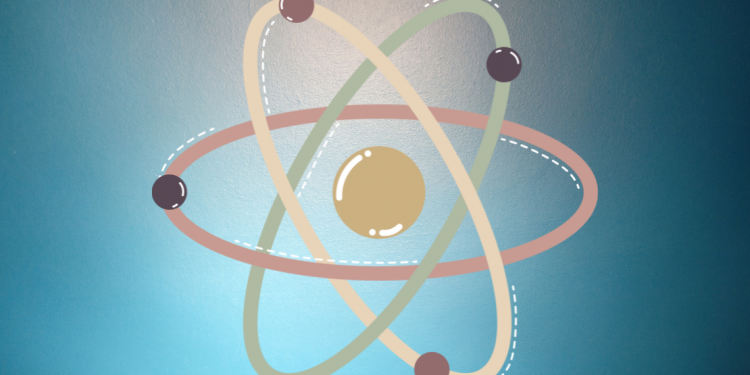Until a few centuries ago, an atom was considered the smallest particle of matter. But with the advancement of science and technology came the evolution of human brains and techniques which led to unthinkable discoveries in time. Out of these discoveries, one was the revelation of a whole universe inside the once-considered undividable particle of matter. What happens if you split an atom? What can probably be extracted by breaking a tiny piece of matter into infinite crumb pieces?
Can the eye be so blind not to see what secrets every little crumb piece hides?
Before diving deeper into the article by moving to the question of “what happens?” let us get an understanding of what an atom really is.
What is an atom?
Also known as the building block of all matter, an atom is an extremely small object that makes up everything around us. Be it a pillow cover or a huge building, all are made up of atoms.
What is an atom made up of?
An atom contains a nucleus. A nucleus is made up of positively charged particles called protons, and particles having no charge called neutrons. Combined together, these particles make up a nucleus of an atom.
Another particle an atom contains is an electron, which has a negative charge. But these particles circle the nucleus rather than being inside it.
While talking about splitting an atom, one should keep in mind these three particles, as well as its nucleus.
What happens when you split an atom?
Nucleons are held together inside the nucleus with the help of a force called binding energy. By putting a strain on the nucleus, the binding energy becomes weak and the nucleus splits. This is what normal humans would call the splitting of an atom.
However, the atom does not split just here. For that to happen, a neutron if shot at the right speed, is bombarded with the nucleus. Under the right conditions, this bombardment causes the nucleus to split into two, and energy is released. This process is called nuclear fission.
An insight into nuclear fission
Enrico Fermi achieved the first self-sustaining nuclear reaction in December 1942. The same idea was used for the destructive explosion of Hiroshima and Nagasaki in 1945. Even though this destruction brought lifetime doom to the region, it also ignited the discovery that the energy released during the splitting of the nucleus can be used for the beneficiary of humankind.
Although the energy released by splitting one atom is minuscule, the stray neutrons from the split atoms wander about and cause more atoms to split. This carries on forming a chain nuclear reaction.
It is necessary to keep a check and balance these stray neutrons that cause a chain reaction because if they rapidly react, it can result in a nuclear explosion.
Is this the case for every atom?
Theoretically, this can be the same case for every atom. Scientifically, the size of the atom matters to a great extent. The larger the size of an atom, the larger will be the nuclei, and the easier will be the process of splitting.
Controversially, the smaller the size of the atom, the smaller will be the nucleus, and more energy will be required to split the atom into two or more pieces.
How many parts can an atom be split into?
What happens when you split an atom is it either splits into two parts or more. These parts are not exactly halved. Rather, binary or ternary fission splits the atom into two or three parts.
Explained with an example
Let us take Iron and Uranium as examples of the process of nuclear fission. Iron is a very stable element, and its size is sufficient for nuclear fission by neutron bombardment.
Uranium is considered the most commonly used in nuclear reactors. It has 92 protons in its nucleus and it typically splits to form Krypton and Barium atoms. This nuclear fission is binary as it produces two atoms. Those that will produce three or more will be considered as ternary fissions.
Different ways to split an atom
Following are a few ways in which atoms can be split:
Bombarding radioactive isotopes
While using this technique, it is important to know which isotope to use. Not all isotopes are equal when it come to bombardment, as some can split too readily, causing spontaneous fission to take place. keep in mind the following:
- Choose the right isotope
- Get enough isotopes to continue fission after the first split
- Fire one atomic nucleus of the same isotope at another
- Bombard the nuclei of the fissile isotope with subatomic particles
Compressing Radioactive materials
By compressing the material enough, fission may take place. But make sure that the fission continues even after the atom is split to cause a chain reaction. Keep the following in mind:
- Obtain the critical mass of a radioactive isotope
- Enrich the isotope
- Squeeze the atomic sample tight to bring atoms together
Splitting atoms by using a laser
A laser can be used to split an atom. After all, it is a red beam used to cut between materials, why not use it to split an atom? Keep the following in mind while performing this procedure:
- Encase your radioactive materials in a metal
- Excite the electrons with the use of a laser light
- Stop the laser once the atom has been split and energy has been released
Conclusion
With the advancement of science and technology comes the enhancement of techniques and deep learning. The undividable particle that was once considered to be the smallest particle of matter has a whole universe of its own.
Atoms are split to release energy in the form of nuclear fissions and reactions. This energy can either be used for the benefit of humankind or destruction of eras and generations. One must be careful while handling this power as one wrong step can cause an unfixable disaster to take place.






